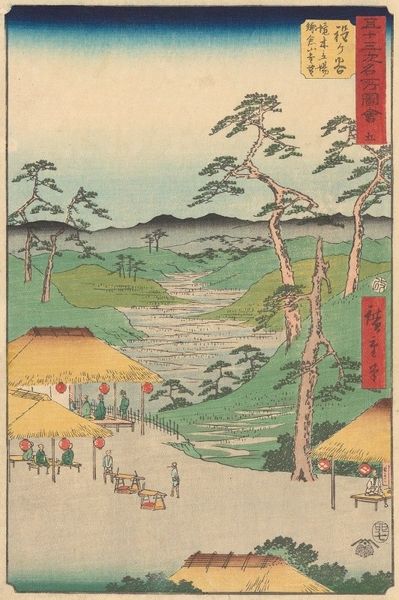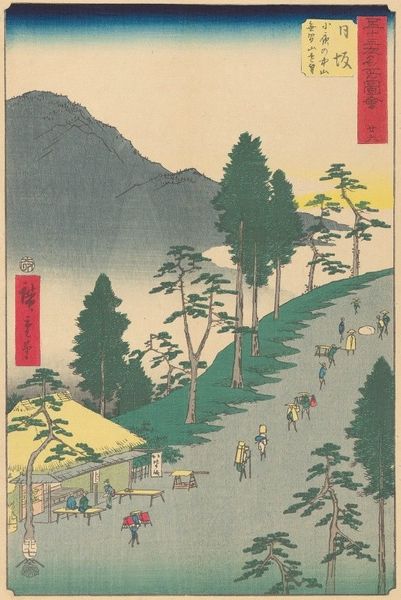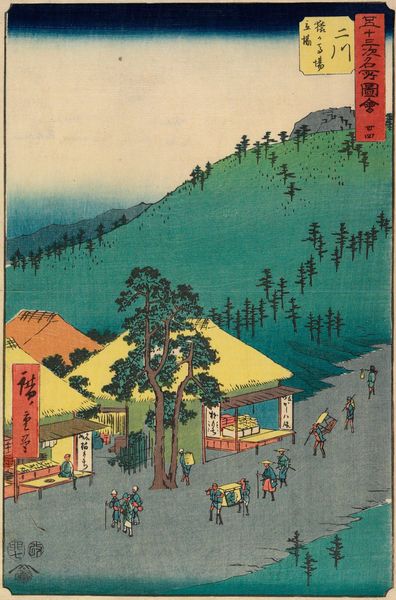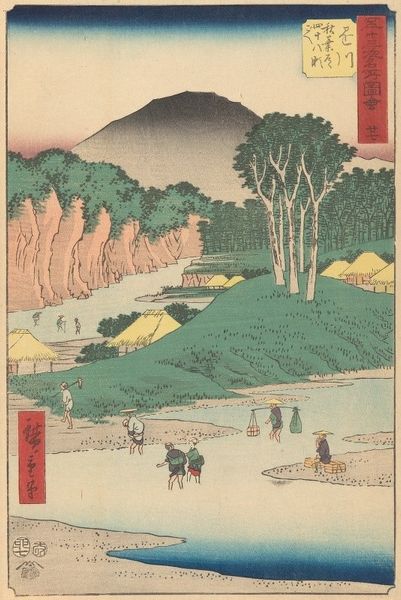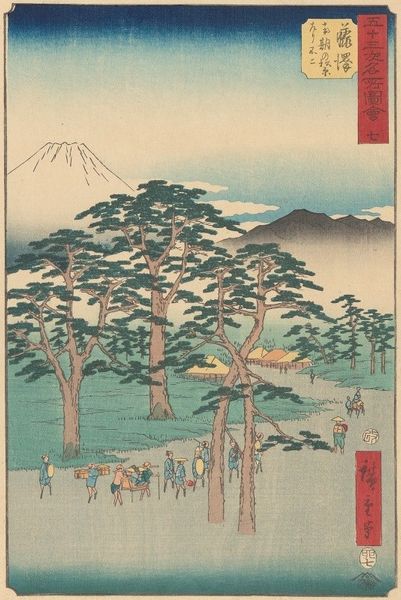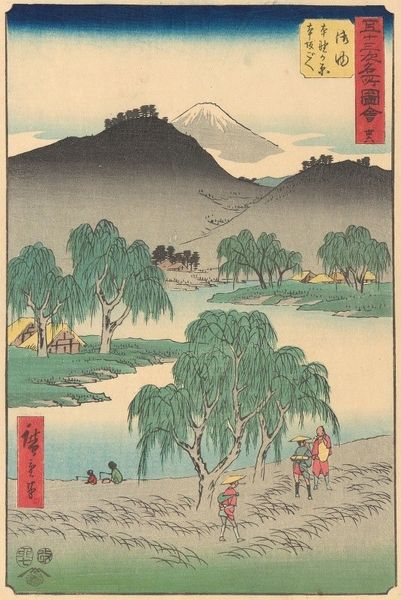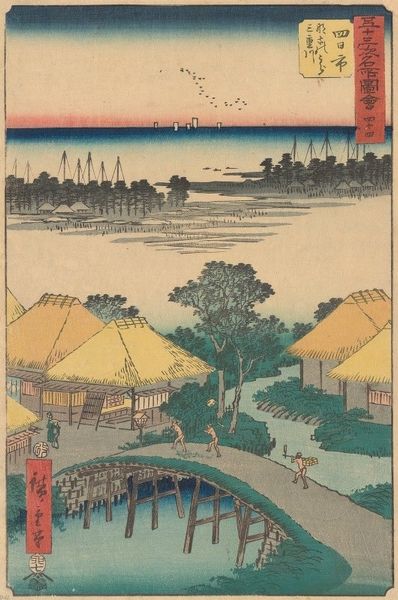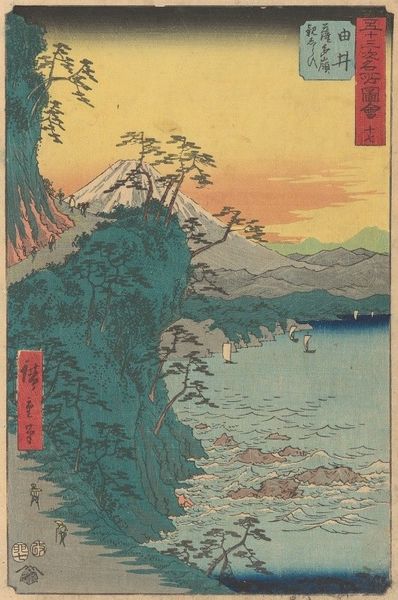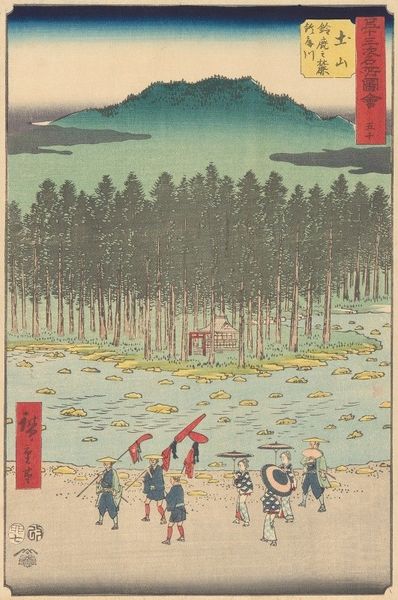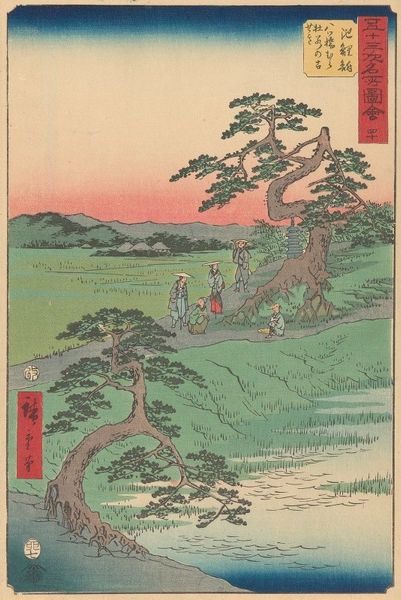
print, woodblock-print
# print
#
asian-art
#
landscape
#
ukiyo-e
#
woodblock-print
Copyright: Public Domain: Artvee
This is Futagawa, a woodblock print by Utagawa Hiroshige. Hiroshige was a master of ukiyo-e, a Japanese art movement that flourished from the 17th through 19th centuries. Ukiyo-e means ‘pictures of the floating world.’ It is worth considering what this means in the context of Japanese social history. Produced in the Edo period when Japan was ruled by the Tokugawa Shogunate, it reflects a time of relative peace and prosperity, and a growing urban culture. This print, likely mass-produced, depicts a scene from daily life. We see travelers on the road, shops, and the natural landscape. Such images were popular among the emerging merchant class. But how might this art have subtly questioned the rigid social hierarchy imposed by the Shogunate? Does the idea of the 'floating world' imply a world of impermanence, a challenge to the established order? To understand this better, one must delve into the history of the Edo period, examining its social structures, economic developments, and the role of art within it. The study of such images reveals the complex interplay between art, society, and power.
Comments
No comments
Be the first to comment and join the conversation on the ultimate creative platform.
